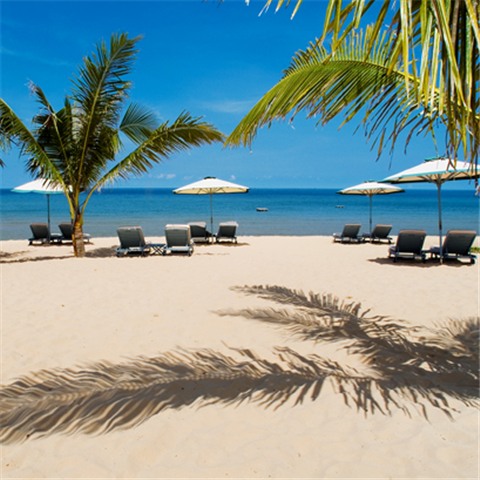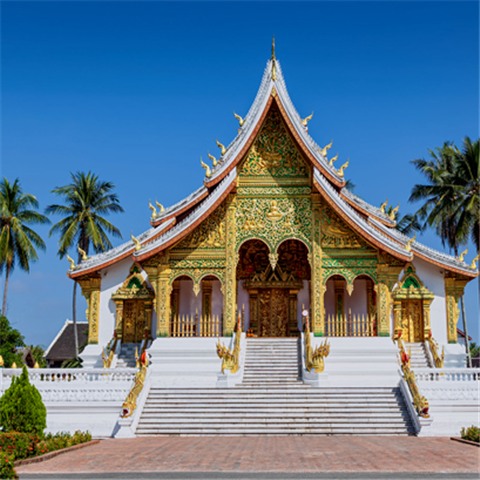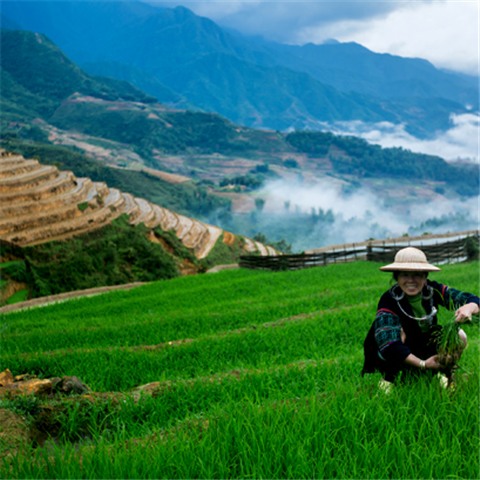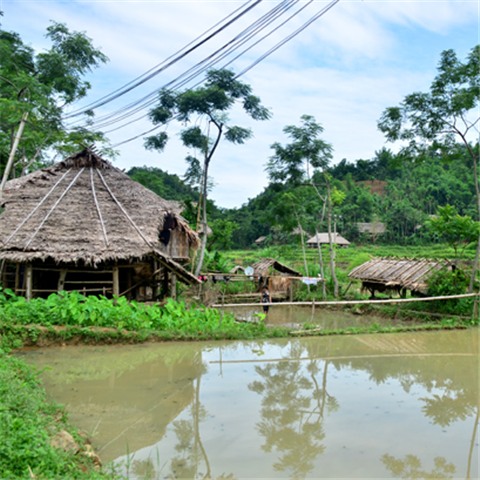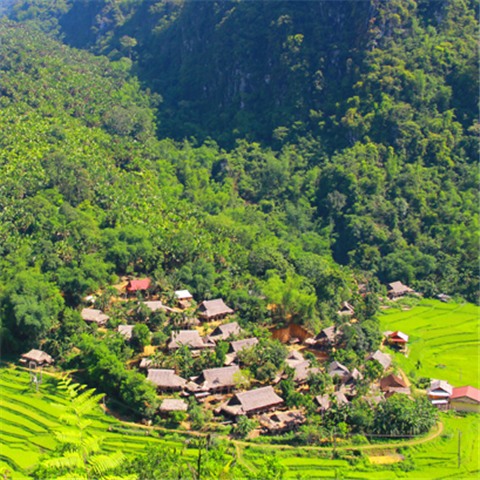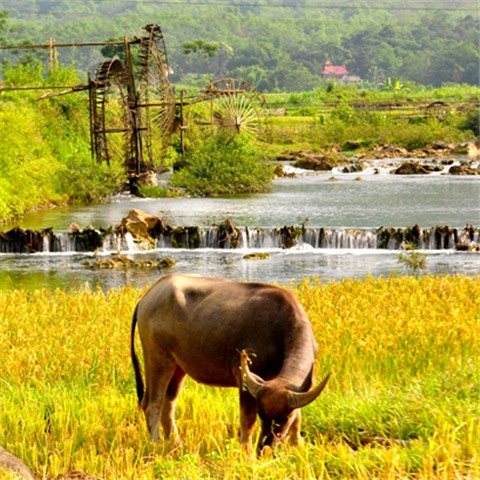Transportation
1. What means of transportation is available for traveling in Vietnam?
Travel in Vietnam is easier than it used to be. Routine travel in Vietnam between major cities and tour destinations is generally comfortable and hassle free. Independent travelers will sometimes be required to have some local knowledge to ensure a decent level of comfort.
By air: You can get almost anywhere while visiting Vietnam, but scheduled flights to some Vietnam travel destinations are few and late changes in aircraft type can sometimes impact travel plans. There are also many low-cost airlines worth checking out.
By train: Rail is generally slower than air or road, however they are great value for money. Lines run between Hanoi - Saigon, Hanoi - Lao Cai - Hekou (China) - Kunming (China), and Hanoi – Langson - Beijing (China). The train to China departs from Hanoi train station. You can join the train to Kunming at the Lao Cai station, but you can only join the train to Beijing from Hanoi. The train stations for some Vietnam travel destinations can be literally in the middle of nowhere. Footprint generally recommends AC soft-sleepers to their clients.
By local bus: Bus travel used to be available as only packed, sardine-style, into a hot and stuffy, smoke belching reject Russian 40-seater, with bicycles, motorbikes and maybe the odd pig strapped to the roof. For the true adventurer only! These buses are still around and popular with the locals as tickets are dirt cheap.
However, there is now a system of privately owned buses, open-tour buses, minivans (usually 12 to 16-seaters) connecting most sizeable cities with neighboring towns and cities. Alternatively you sk your travel consultants at Footprint how to get to your next travel destination by minivan.
In most of the cities you can find cyclo or xe om for transferring around, negotiate for prices before you jump on is a must.
Bicycle or motorbike rentals can be found in major cities like Hanoi, Ho Chi Minh Hue, or Hoi An, but make sure that you understand the traffic rules before riding.
On Foot: You may need to learn how to cross city streets, especially in Saigon and Hanoi, but generally foot travel is a great experience.
2. How is train travel in Vietnam?
Traveling by train is a good option to see the whole of Vietnam. There is a direct line from North (Hanoi) to South (Saigon). We can not compare trains here in Vietnam with trains in Europe, but the trains are in good condition, with the newer trains equipped with modern air-conditioned coaches and sleeper cabins for the popular overnight routes. Running not faster than the bus, but much safer, Footprint suggests, whenever there is an option with the train, take it!
The major routes is the North to South train that links Hanoi and Ho Chi Minh City, serving most popular destinations along the way, and the Northern line from Hanoi to Sapa. There are also trains that go beyond to Beijing and China.
Travel between Hanoi and Saigon (Ho Chi Minh City)
Vietnam’s Reunification Express (Thong Nhat) is the main train line running between North and South, connecting Hanoi and Ho Chi Minh City and stopping at many destinations along the coast, including Hue, Danang, and Nha Trang. The train trip from Hanoi to HCMC is 1,726 km (1,070 miles), taking more than 30 hours, although few people do it in one long journey without stopping along the way.
The two major types of trains are the: SE (SE1-SE6) and TN (TN3-TN10). In general, the SE trains are the better trains with modern air-conditioned coaches and larger windows, as well as a restaurant car.
Travel between Hanoi and Lao Cai (Sapa), and beyond
From Hanoi, there are also trains that run northwest or northeast with border crossings into China (please click here for more information on trains to and from China).
A popular route is between Hanoi and Lao Cai, which is the closest train station to the tourist destination of Sapa. The trip from Hanoi to Lao Cai takes about 10 hours, with most choosing to do an overnight trip. There is a number of tourist trains that run daily from Hanoi to Lao Cai and back, including Viet Royal, Tulico, Ratraco, all with air-conditioned soft sleeper cabins which are comfortable, although not luxurious. For a luxury option, the Victoria Sapa has its own luxury cabins on the train for those that will stay at their hotel.
3. Which are the international airport in Vietnam? Airport taxes in Vietnam?
Noi Bai International Airport, Hanoi (in the North), Vietnam
Location: The airport is situated 28 miles (45km) north of Hanoi.
Time: GMT +7.
Transfer to the city: Airport minibuses and metered taxis are available outside arrivals for transport to the city centre. Make sure the taxi driver is wearing an official name badge and that the meter is on. Cost of a taxi is about $18 USD.
Departure tax: none, but this could change without notice.
Tan Son Nhat International Airport, Ho Chi Minh City / Saigon (in the South), Vietnam
Location: The airport is situated four miles (7km) from Ho Chi Minh City (Saigon).
Time: GMT +7.
Transfer to the city: Minibuses and metered taxis are available for transport to the city centre. Make sure the driver is wearing an official name badge and that the metre is on. Most hotels can arrange transport for arriving passengers, but visitors should organize this in advance. Cost is usually about $15 USD.
Departure tax: none, but this could change without notice.
There are also major airports in Danang (Central Vietnam), Nha Trang (Central Vietanm), and Cat Bi (Hai Phong, near Halong Bay in Northern Vietnam). Check with your Footprint Travelconsultant for more information about other domestic airports (Dong Hoi, Can Tho, Phu Quoc, to name a few).
4. How many domestic airport are there in Vietnam?
Here are the list of all the domestic airports in Vietnam:
|
|
5. Can we travel by local bus?
If you plan to get more of a local experience then you can travel by local bus. There are public bus stations in all Vietnam cities and towns, but we do not recommend traveling on these buses.
There are many reasons for this. The safety is not to a standard that we feel is sufficient for our guests, and the standard of the bus alone is one that is almost always in dire need of attention. Finally, safe driving sense is one that is not practiced by the drivers of these buses.
6. What about the Open Bus?
Same as the train from North to South and vise versa, the open bus is often a good choice for budget travelers. The open-tour buses cover most of the popular destinations between the North and South, and travelers can jump on and off whenever they want, for as long as they want, in each destination along the way.
7. How can I get visa upon arrival?
There are 2 ways to get your Vietnam visa:
1. Get your visa in the country where you are living by contacting the visa department at the Vietnam Embassy or Consulate there.
Documents needed: Passport of 6 months’ validity; visa application forms; and probably some others required by the embassy or consulate. Visa forms are available directly from the Vietnamese embassy or consulate in your country.
Fees: vary from embassy to embassy.
Duration: It will take between 4 to 10 days depending on your country of origin.
2. Get your visa upon arrival in Vietnam with pre-approved entry visa letter.
Relax and we will handle everything from here for you.* Footprint Vietnam Travel, as your sponsor, will email you the Visa Approval Letter issued by the Vietnam Immigration Office here. When you enter Vietnam by air** you will, fill out a short form, and give the issuing officer two passport photos and a fee. He/she will give you the all important visa and stamp on your passport.
How long does it take? Normally it takes 2-3 days to complete from when we receive all your information.
How much does it cost? This depends on the typr of visa you require (Tourist or Business, 1 or 3 months, Single or Multiple Entry). Please get this information from our Footprint Travel consultant.
How long can I stay? The regular Tourist visa are valid for 30 days. You can extend it here if needed.
Documents needed: Please send us a complete copy of your passport via email including your full name as it appears on your passport, date of birth, gender, nationality, passport numbers, passport expiry date, and your arrival date to Vietnam or flight information.
Attention please:
(*) We can only obtain the visa for you once you have decided to book a tour with us. This is set by the Vietnam Immigration Department.
(**) Visa upon arrival can only be arranged when you enter Vietnam by air (Hanoi, Danang, Saigon).
8. What if I wish to extend my visit while I'm in Vietnam?
No problem, you can always extend your visit in Vietnam!
You are normally given a one month single entry travel visa, which lasts 30 days. If you plan on extending You should need to make your decision at least 7 days before your visa is expired as it normally takes about 2 working days to get your visa extended. Extensions are usually for another one month period. For longer stay visas or extensions, it may take about 7 to 15 days to get.
There are also 3 month tourist visas available at a reasonable cost when you enter Vietnam. Ask your visa provider about this option before coming to Vietnam when you are applying for your pre-approved entry visa letter. Then you do not have to worry about extending your visa when you here.
ready for an adventure with us
Here are the nominees



